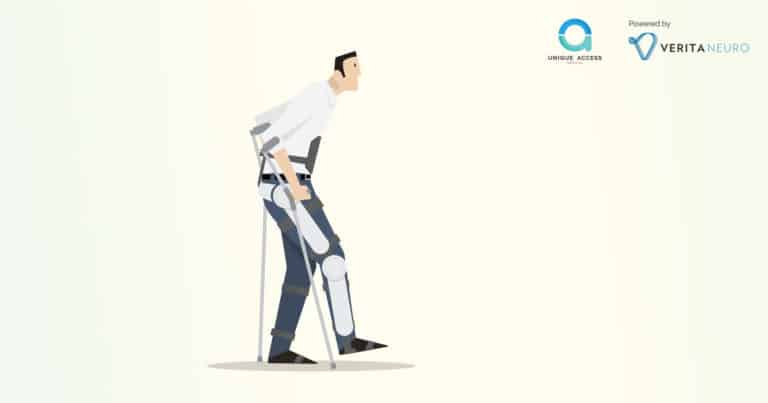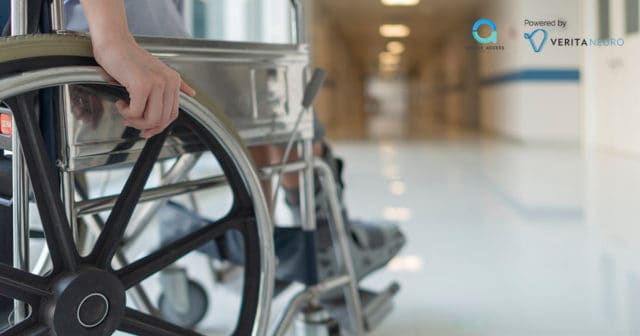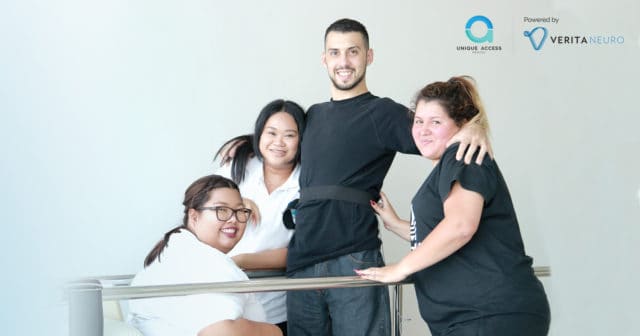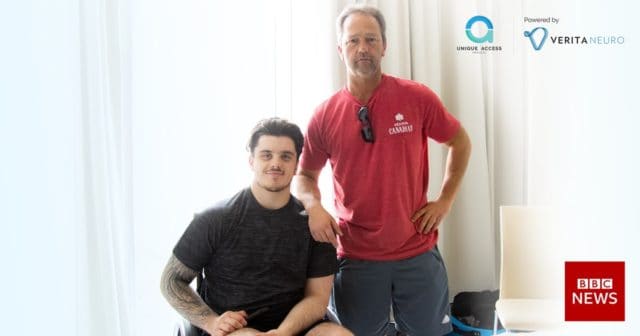People with Spinal Cord Injuries (SCI) have traditionally had limited options for treating their symptoms and rehabilitating their injuries.
This has been one of modern medicine’s toughest defeats, especially considering SCI can have devastating effects on the patient’s quality of life: decreased mobility, loss of sensation, bladder and bowel control issues, and significantly reduced sexual function.
However, over the past 20 years, several technologies aimed at spinal cord repair have emerged. Unique Access Medical (UAM) has been at the forefront of one such advancement, helping to make Epidural Stimulation available to SCI sufferers on a commercial basis since 2016.
And there are many other treatments vying for the spotlight, including transcutaneous electrical stimulation, regenerative treatments, and the latest med-tech breakthrough for SCI, the mind-reading exoskeleton.
How does this exoskeleton work?
The exoskeleton being developed to help paraplegics and quadriplegics walk is like an electronic leg brace that’s fitted to the individual and allows hip and knee movement that otherwise wouldn’t be possible due to the spinal injury.
In other words, this high-tech leg brace gives people with SCI the opportunity to experience standing and walking without the extreme physical exertion required of the patient in most SCI rehabilitation programs.
These exoskeletons — developed through a partnership between biomedical research center, Clinatec, and the University of Grenoble — can also be thought of as robotic suits, fitted to the patient’s body and controlled by electrodes implanted on the surface of the brain.
Each implant reads brain activity and transmits signals via sophisticated computer software. That software is programmed to read the brainwaves and turn them into commands that are obeyed by the exoskeleton.
It may sound like sci-fi, but when the patient thinks, it prompts the software to move the robotic suit and move the patient’s legs.
How have test patients responded?
The partnership in Grenoble treated a man named Thibault. He was injured in a 15-meter fall in a nightclub that left him paralyzed and in hospital for an extended period of time.
In 2017, he took part in the exoskeleton trial and soon realized he was activating the brain implants as if he were controlling a virtual character in a video game. But then he started to see results, and understood that this was not simply an interesting scientific trial.
“It was like [being the] first man on the moon. I didn’t walk for two years. I forgot what it is to stand, and I forgot I was taller than a lot of people in the room,” he said.
Then there was the application of the exoskeleton to the upper body, and learning how to control his arms.
“It was very difficult because it is a combination of multiple muscles and movements. This is the most impressive thing I do with the exoskeleton,” said Thibault.
Measuring the results
The advanced robotics employed in the exoskeleton are heavy due to the materials required to make it work, so patients who wear it are attached to a harness so there is no risk of injury.
This means that this version of the robotic suit is not yet suitable, if you will, to be worn outside of laboratory settings. And while it is not yet completely restoring motor function to those who have worn it, the exoskeleton is an improvement on similar advances that allow people to control a single limb with their thoughts.
The scientists involved in this study would probably agree that this is among the most exciting technological developments in the quest to beat SCI in recent years. More and more, people with paralysis need not be resigned to a reduced quality of life thanks to these kinds of inspired advances in enabling voluntary movements. Here at UAM, we couldn’t be more proud to be part of a community that’s pushing the boundaries on SCI treatments. For more information on exoskeletons, and other SCI treatments, please contact us and a Patient Representative will get back to you soon!










